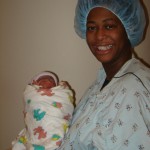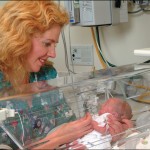
BY CHERYL WILLIAMS, RD, LD
If you’re looking for an excuse to indulge in the yummy chocolate you get this Valentine’s Day, research suggests it may not be so bad for you.
A number of studies, conducted over the last decade have associated cocoa and dark chocolate consumption with heart health benefits. These benefits come from cocoa, derived from the cacao plant, which is rich in flavonoids (cocoa flavanols to be exact). Flavonoids are antioxidants also found in berries, grapes, tea, and apples. As a whole, antioxidants prevent cellular damage and inflammation which are two major mechanisms involved in the development of heart disease.
So what does the research say?
A study published in the American Journal of Clinical Nutrition found that high-flavanol dark chocolate reduced bad cholesterol (LDL) oxidation and increased good cholesterol (HDL) levels. LDL oxidation promotes the development of plaque and hardening of the coronary arteries, thus lessening oxidation could help to prevent heart disease.
A Harvard research study found that flavanol-rich cocoa induced nitric-oxide production, which causes blood vessels to relax and expand, thus improving blood flow. Improved coronary vasodilation could potentially lower the risk of a cardiovascular event.
In a double-blind randomized Circulation study flavonoid-rich dark chocolate (containing 70% cocoa) reduced serum oxidative stress and decreased platelet activity (clumping) in heart transplant recipients. This favorable impact on vascular and platelet function is relevant because vascular dysfunction and platelet activation (adhesion upon damaged cell wall) are the basis of atherothrombosis (blood clotting) and coronary artery disease.
How can you reap chocolate’s potential benefits?
Not all cocoa products and/or chocolates are created equal. Milk chocolate, for example, is not rich in flavanols (contains only 10-20% cocoa solids) and white chocolate contains none at all. In addition, some cocoa products and chocolates are processed with alkali, which can destroy flavanols.
Follow these tips for heart healthy chocolate consumption:
- Avoid cocoa products processed with alkali (dutched) as seen in the ingredient list
- Choose dark chocolate with at least 70% cocoa
- Enjoy 100% unsweetened non-dutched cocoa (great for hot chocolate!)
Also, remember that chocolate is not a health food, as it is high in calories, fat and added sugar. Thus, make room for dark chocolate by cutting extra calories elsewhere in your diet. Additionally, stick to small amounts (e.g. 1 ounce) and do not eat in place of plant-based whole foods such as vegetables and fruits.
Cheryl Williams is a registered dietitian at the Emory Heart & Vascular Center. She provides nutrition therapy, wellness coaching, monthly nutrition seminars and healthy cooking demonstrations working with the Emory HeartWise Cardiac Risk Reduction Program.















